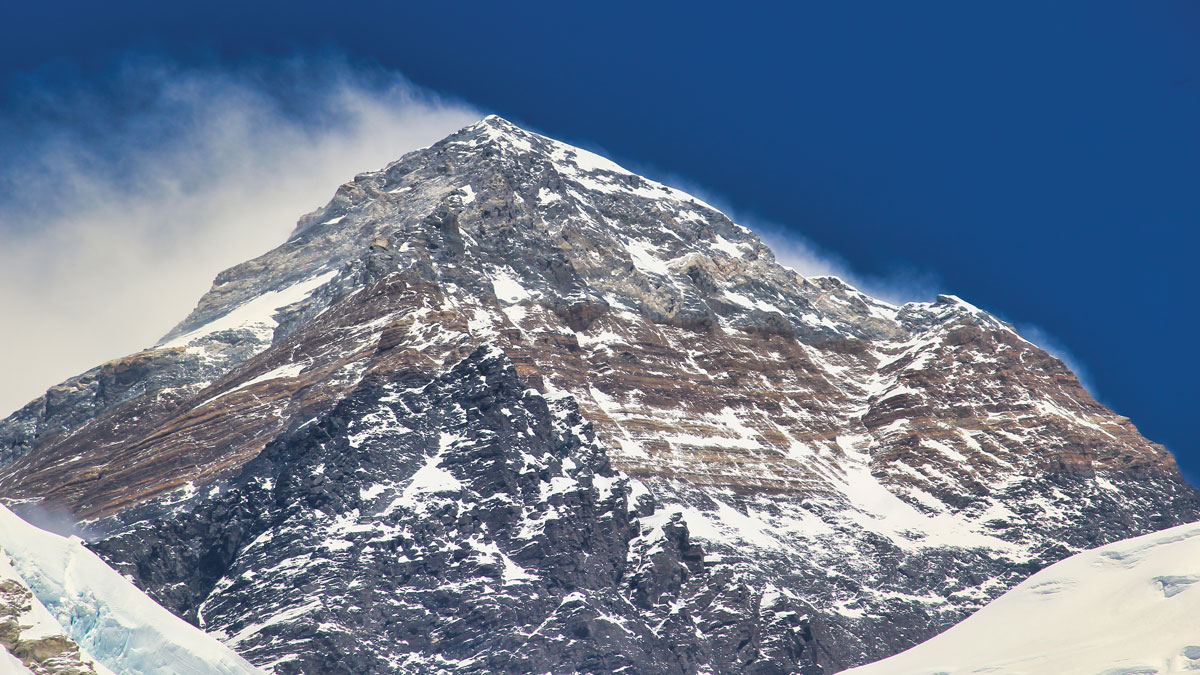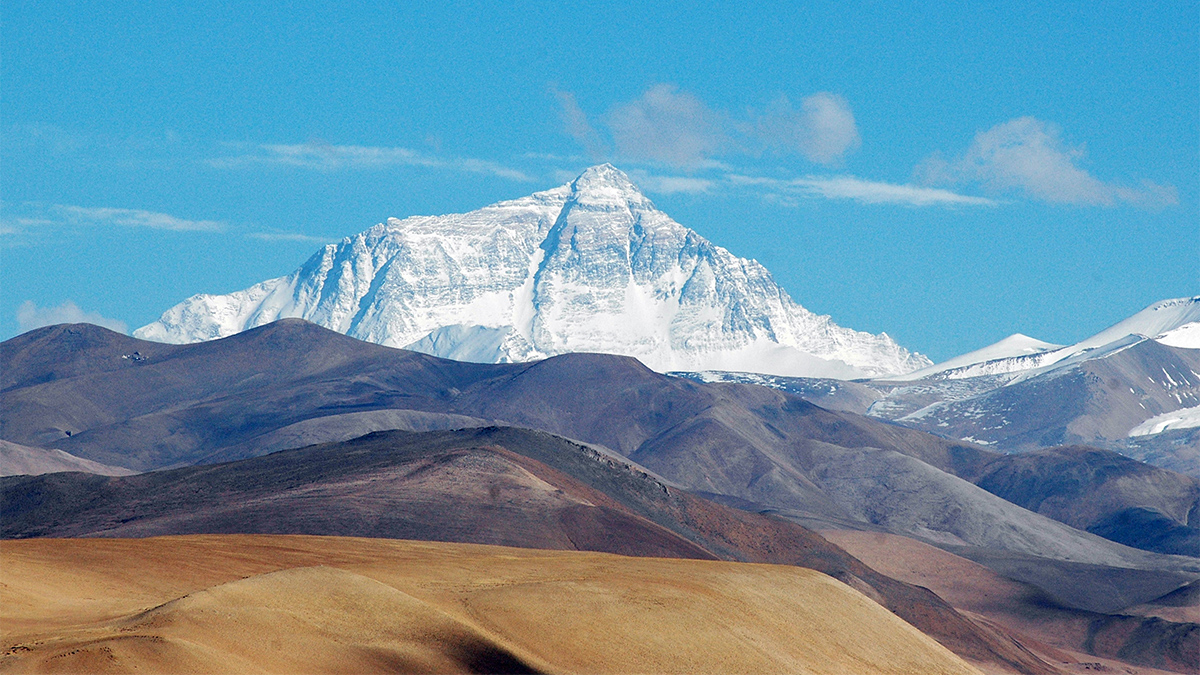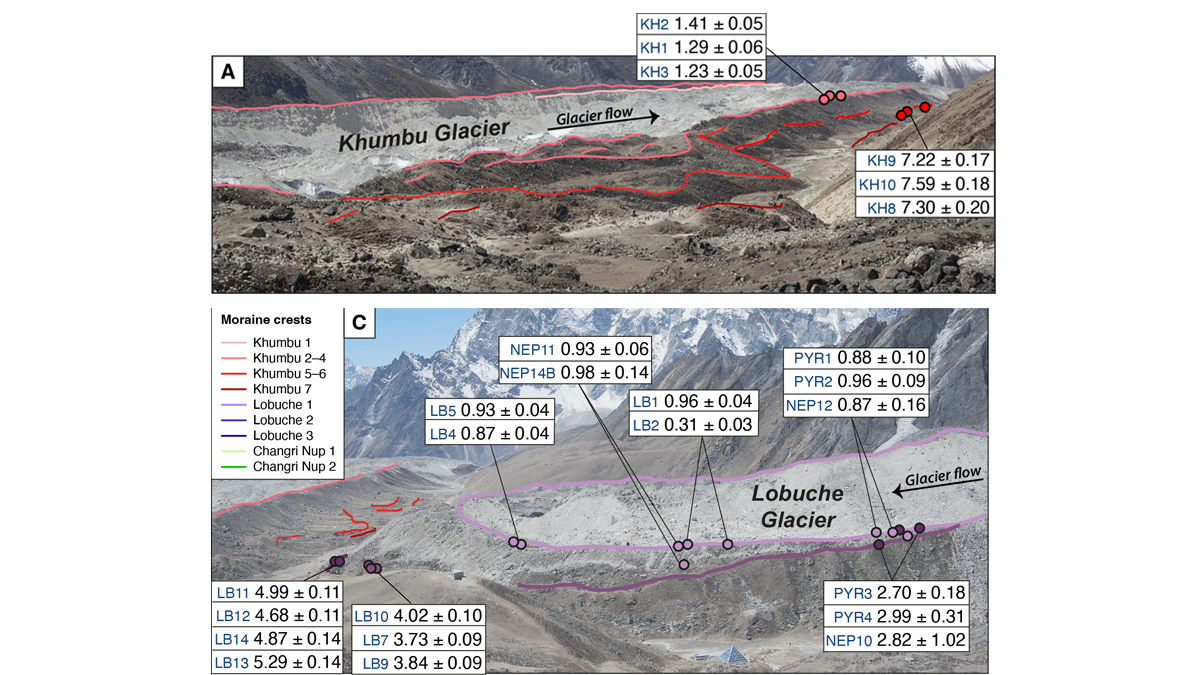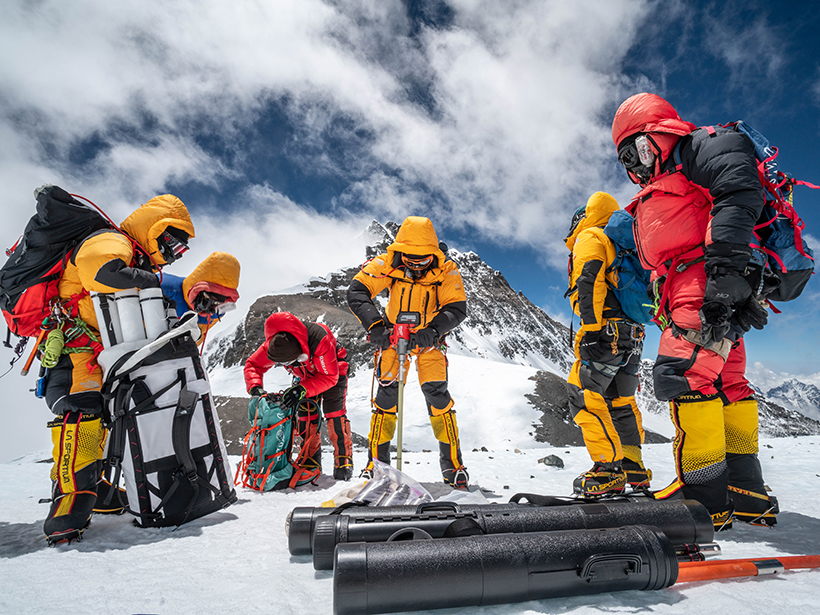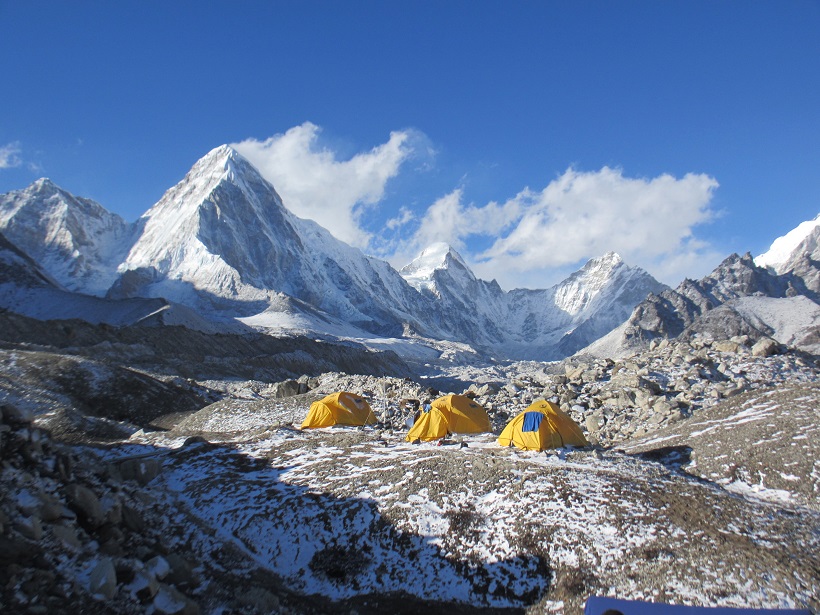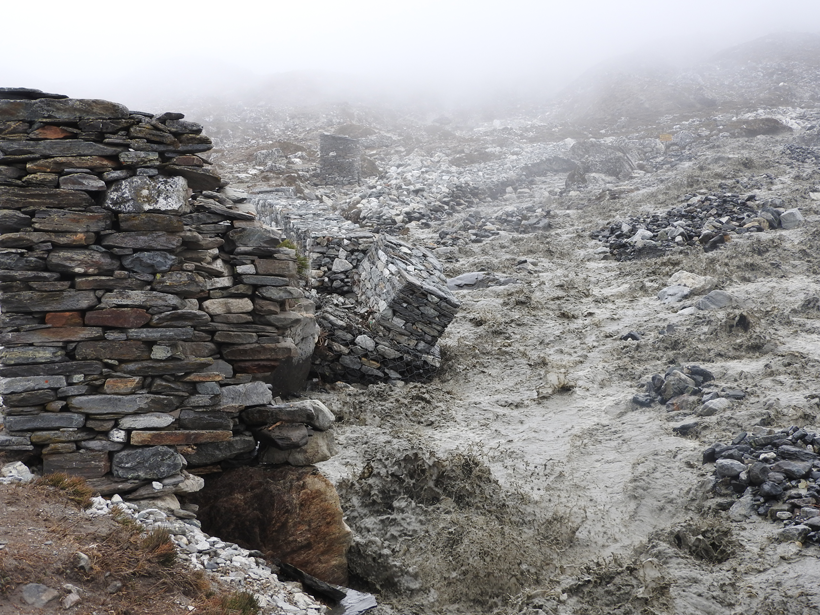Our March issue takes you on an epic journey with the rocks of Mount Everest, from seafloor to summit.
Mount Everest
How to Build the World’s Highest Mountain
The rocks of Mount Everest’s peak made an epic journey from seafloor to summit.
A Pirate River May Be Giving Mount Everest a Boost
Rapid erosion can cause mountains to rise—even the world’s tallest peak.
Glacier Advance and Retreat: Insights From the Top of the World
New dating of glacial features reveals predictable glacier behavior in response to climate warming and cooling in the Everest region in the past 8,000 years.
El Monte Everest a veces puede sentirse más bajo que el K2
Las variaciones de la presión atmosférica en la cima del Everest afectan a la disponibilidad de oxígeno, modificando la percepción de la elevación de la cumbre unos cientos de metros.
Mount Everest Can Sometimes Feel Lower Than K2
Variations in air pressure on the top of Mount Everest affect oxygen availability, changing the perceived elevation of the summit by hundreds of meters.
An Ice Core from the Roof of the World
An innovative National Geographic expedition collected the world’s highest ice core from Mount Everest.
Tracing the Moisture That Nourishes the World’s Highest Glacier
Using data from weather stations on and around Mount Everest, scientists find that the Khumbu Glacier receives most of its moisture from the Bay of Bengal.
Hot Water, Cold Ice
Despite careful planning, there can be many uncertainties and unknowns about doing field research in remote locations.
Glacial Outburst Flood near Mount Everest Caught on Video
More than 2 million cubic meters of water, hidden deep within Lhotse Glacier, spilled down toward the village of Chukhung, Nepal, in 2016.

